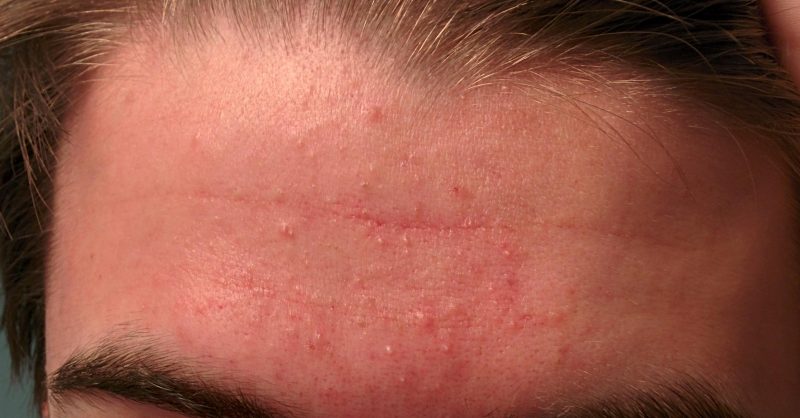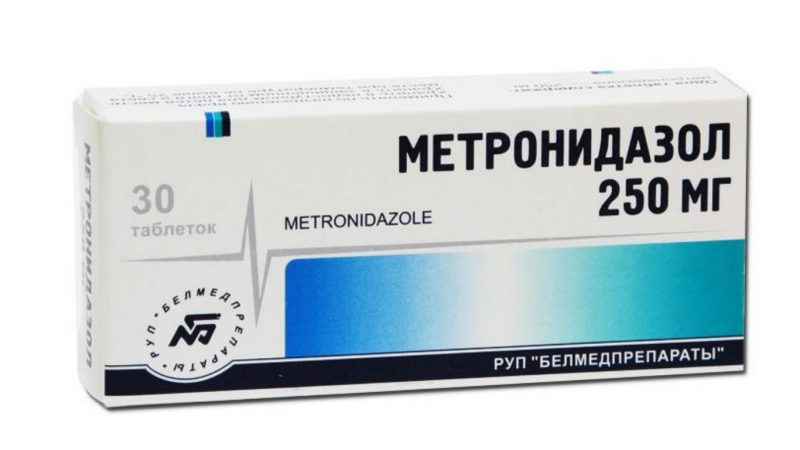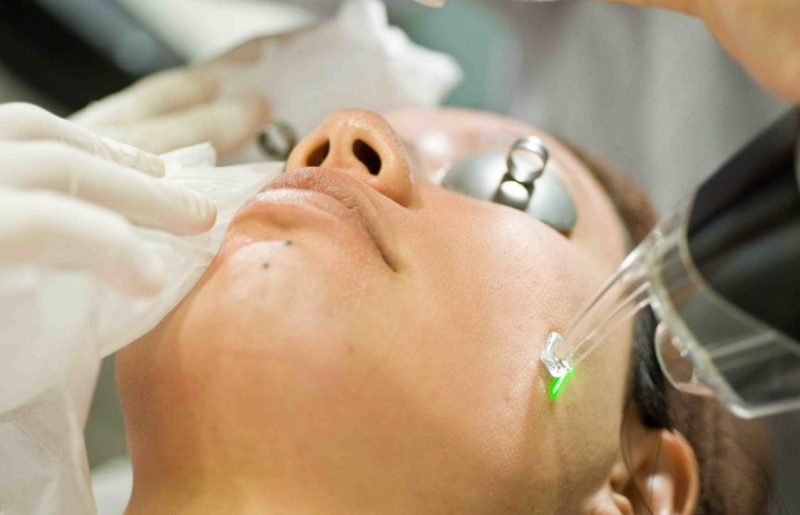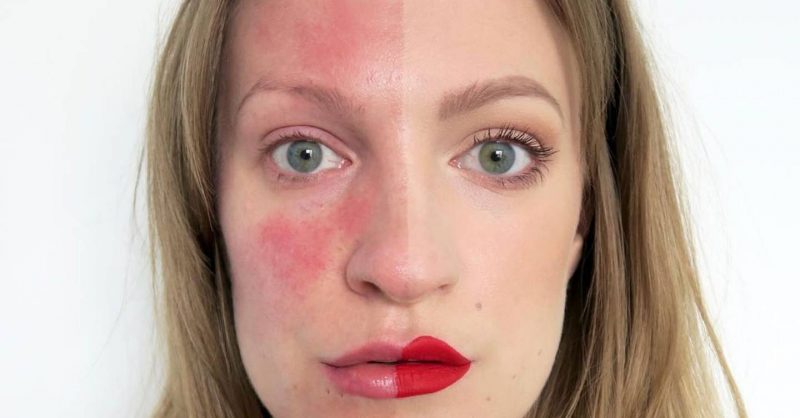Skin diseases are a very unpleasant and sometimes dangerous phenomenon. One of the common types of such diseases is rosacea. What is characteristic of a pink rash and how can its symptoms be eliminated? Learn more about this.
Material Content:
What is rosacea?
Rosacea is a non-infectious vascular lesion of the skin of the face. The disease is characterized by redness of the epidermis in the area of the chin, nose, forehead and cheeks, as well as a deep pink rash, pustules and asterisks. Later stages are manifested in thickening of the skin and earlobes.
Pathology provokes a deterioration in the appearance of the face, in some cases it leads to severe cosmetic defects, psychological problems, and a change in appearance. By affecting the eyes, rosacea causes damage to the cornea.
Causes of facial skin disease
Even modern medicine today is not able to reliably establish the causes and mechanism of development of rosacea. In the past, this disease was regarded as a consequence of demodicosis, but both of these pathologies are different, although they can complicate each other. The cause of the pink rash is considered to be a high sensitivity of skin vessels. If a person is genetically predisposed to the disease or his vessels are fragile and brittle, then rosacea is likely to occur in response to temperature changes and exposure to hot and dry air.
Medical statistics suggest that rosacea symptoms often occur in people prone to gastritis and ulcers. In addition, there is medicinal or steroid rosacea.This form of the disease develops as a result of prolonged use of ointments based on corticosteroids.
Redness and other concomitant symptoms of the disease can be triggered by a number of reasons:
- In women during the period of gestation, puberty or menopause. It is at this time that there is a change in the hormonal background, which does not affect the vessels in the best way.
- Often, signs of rosacea appear in people of the Celtic phenotype (green-eyed, fair-skinned, with the appearance of freckles). The British at one time called this disease a Celtic curse.
- Rosacea often develops in people suffering from chronic forms of dermatitis (contact or allergic).
- In case of malfunctioning of the endocrine system.
- As a result of excessive consumption of excessively hot food, alcohol, as well as frequent visits to saunas and baths.
Note. The disease can occur in both men and women, but the fairer sex is more prone to it. As well as rosacea, the peoples of the North are more likely to suffer than southerners.
Symptoms and signs
Symptoms of rosacea may vary depending on what stage the disease is at.
They are distinguished by several:
- Early stage. Symptoms of the disease make themselves felt after contact with hot or cold water or food. A sharp change in temperature leads to the fact that the face is covered with red spots that remain on the skin for a while. After a certain period, they still disappear. At the same time, patients do not always attach importance to such symptoms, since it does not entail discomfort and is regarded by them as a temporary phenomenon. At this stage, spots cover the T-zone, cheeks, chin.
- The development of the disease. It is characterized by the expansion of capillaries, the appearance of bumps and bumps on the skin. The latter are gradually transformed into impenetrable rough seals.
- Chronic stage. It differs by the appearance of red papules and nodes around the eyes and mouth. These rashes can gradually merge and form extensive damage. The disease eventually develops into chronic dermatosis. In this case, the expansion of the sebaceous glands often leads to the appearance of an inflammatory process and the attachment of a secondary infection.
With further progression, the disease affects the eyelids and causes discomfort during the blinking process. A person may feel burning, itching and dry eyes, tightness of the skin around them. This form is called ocular rosacea and can provoke vision loss.
Diagnostic measures
A qualified dermatologist is able to track rosacea according to its symptoms. However, the disease should be differentiated from other dermatological pathologies. For this, the doctor assesses the condition of the vessels, examines the microflora of the integument. In some cases, the diagnosis may include a biochemical blood test. When abscesses are present on the face, their contents are sent for bacteriological culture.
An effective treatment for rosacea
Rosacea refers to a variety of diseases, the treatment of which should be complex. Drug treatment can and should be supplemented with alternative recipes in tandem with a change in lifestyle.
Rosacea medications
For the treatment of such skin pathology, dermatologists often recommend a long-term use of antifungal, antimicrobial and antiprotozoal agents. Additionally, retinoids (preparations based on vitamin A) can be prescribed.
Important! All of these funds have a long list of contraindications. For this reason, they can not be used for self-medication without the prior approval of a doctor.
And also the following types of ointments and creams for rosacea on the face can be prescribed to the patient:
- Metronidazole. It is relevant for cases when rosacea is combined with demodicosis. Ointment is used twice a day.The course of therapy is designed for several weeks (the specific date is indicated by the doctor).
- Erythromycin 2-4%. Such an ointment helps well in the treatment of rosacea, provoked by the multiplication of proteins, enterobacteria or Pseudomonas aeruginosa. Exceeding the 14-day treatment period can cause microbial immunity to the ointment.
- Tetracycline. For therapy, rosacea is rarely used. A similar ointment is prescribed if it has been revealed that the pathogenic flora is sensitive to tetracycline. Therefore, such treatment is prescribed exclusively after the results of bacteriological studies of the skin. The duration of treatment is determined by a specialist.
In case of untimely treatment of the patient to the doctor or if the disease has gone into a severe stage, the patient may be prescribed antibiotics:
- Metronidazole. It has a strong antibacterial effect, less often than other antibiotics gives complications. It can be used up to 8 weeks.
- Minocycline. It is prescribed if the disease is not amenable to therapy with other drugs. The acute form of the disease involves taking 100 mg of the drug per day. With the extinction of symptoms, the dosage is reduced to 50 mg per day. The duration of treatment is no more than 2 weeks.
Attention! The described drugs are relevant in the treatment of patients in whom rosacea is not complicated by severe concomitant pathologies. Otherwise (if the patient also suffers from hormonal disorders or affected digestive organs), some types of drugs may be contraindicated. For this reason, self-treatment with antibiotics is unacceptable.
Alternative methods of treatment
Alternative recipes are considered equally effective in eliminating the symptoms of rosacea.
The most popular ones include:
- Tincture of calendula. Sold in a pharmacy in the finished form. Tincture (50 ml) is diluted with 1 tbsp. water, after which the liquid is moistened with a towel, squeezed it slightly and applied to the face. The lotion is done once a day, aged for three hours.
- Camomile tea. 1 part of dried flowers is combined with 15 parts of boiling water and insisted for 1 hour. Strained infusion is used similarly to calendula tincture.
- Flask of succession. 1 part of the plant is diluted with 30 parts of boiling water. In the infusion, a cloth or towel is moistened and distributed over the face. It is necessary to withstand it for half an hour, no more.
Attention! Alternative therapy in the treatment of rosacea is by no means an alternative to medication. It can and should be combined with the use of drugs with the approval of a dermatologist.
Cosmetic procedures
In addition to drug and folk therapy in the fight against rosacea, the following cosmetic procedures can be connected:
- Electrocoagulation Destroys spider veins, helps to stop the development of pustules.
- Laser Therapy Laser treatment of rosacea makes dilated and damaged capillaries empty, gradually nullifying their number.
- Photodynamic treatment. Represents pulsed light emitted by waves of a specific length. Helps reduce symptoms of the disease.
- Microcurrent therapy. Normalizes vascular tone and reduces excessive skin sensitivity. Through microcurrents, special medicinal substances that strengthen the vascular walls are introduced into the surface of the skin.
The results from the effects of cosmetic procedures are usually noticeable after 1-2 procedures.
Diet and lifestyle changes
It is very important for people diagnosed with rosacea to eat properly and fully, since the pathology is often caused not only by external, but also by internal factors. You need to eat food in small portions 4-5 times a day. And also it is worth monitoring the body's reaction to specific products, as they can cause individual skin reactions.
Patients suffering from manifestations of rosacea should pay attention to such food:
- fruits and vegetables (unsweetened apples, carrots, pumpkin, melon, cucumbers, broccoli, potatoes, onions);
- whole grain products;
- fish (halibut, tuna, salmon, mackerel);
- chicken eggs;
- nuts (hazelnuts, cashews, pistachios);
- meat (goose, rabbit, turkey, chicken, beef);
- dairy products (sour cream, cottage cheese, butter).
And eating foods on this list for people with rosacea should be avoided:
- caffeinated drinks (tea, coffee, Coca-Cola);
- sweets, flour products (can be replaced with honey or dried fruits);
- hard cheese, ice cream;
- excessively fatty foods;
- alcohol;
- smoked meats, pickles, marinades, spices;
- excessively hot, fried foods;
- red meat;
- citrus fruits, sweet fruits.
Attention! With rosacea, it is especially important to pay attention to the regimen of the day and drink. Sleep should be deep and full, because a night's rest improves the condition of the skin of the face like nothing else. And since water helps maintain the body's defenses, it should be drunk at least 2 liters per day.
Prevention of ailment
Rosacea is recognized as a chronic disease, therefore, after elimination of its main symptoms, it can manifest itself again.
Prevention of recurrent rosacea consists in a systematic visit to a beauty parlor to eliminate newly formed affected vessels. In between visits to a specialist, hypothermia or overheating of the skin should be avoided. And also it should be less to be in direct sunlight and adjust the diet. It is useful to use horse chestnut facial cosmetics.
Rosacea is one of the skin pathologies that delivers a lot of inconvenience to a sick person and can disfigure his appearance. It is almost impossible to recover from this ailment. Nevertheless, the principles of a healthy lifestyle, timely cosmetic procedures and competent face care can delay the appearance of unpleasant symptoms for some time.





















